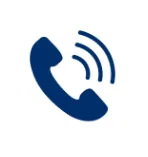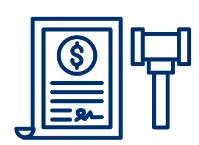Fast & Affordable Immigration Bonds in Raleigh, NC
Fast & Affordable Immigration Bonds in Raleigh, NC
We are here for you!
When a loved one is detained by Immigration and Customs Enforcement (ICE), securing an immigration bail bond can help them remain out of detention while awaiting their court date. We offer fast, reliable immigration bonds in Raleigh, NC, with 24/7 support to assist you.

We are here for you!
When a loved one is detained by Immigration and Customs Enforcement (ICE), securing an immigration bail bond can help them remain out of detention while awaiting their court date. We offer fast, reliable immigration bonds in Raleigh, NC, with 24/7 support to assist you.
Our Process
How Immigration Bonds Work
Securing an immigration bond can be stressful, but our team is here to guide you through the process:

Contact Us
Reach out for immediate help with posting an immigration bond in Wake County.

Post Bond
We’ll guide you through the bond process and required paperwork.

Release from Detention
Once the bond is posted, your loved one can be released while awaiting their immigration hearing.
Ready to get started?
Our Process
How Immigration Bonds Work
Securing an immigration bond can be stressful, but our team is here to guide you through the process:

Contact Us
Reach out for immediate help with posting an immigration bond in Wake County.

Post Bond
We’ll guide you through the bond process and required paperwork.

Release from Detention
Once the bond is posted, your loved one can be released while awaiting their immigration hearing.
Ready to get started?
Our Services
Why Choose Us for Immigration Bonds in Raleigh?
We understand the stress involved in retrieving a seized vehicle, and our team offers the following advantages:
Fast Processing: We prioritize getting your loved one released as quickly as possible.
Affordable Payment Plans: We offer flexible payment options to fit your budget.
24/7 Availability: Our team is available24/7to assist with immigration bonds in Raleigh.
Our Services
Why Choose Us for Immigration Bonds in Raleigh?
We understand the stress involved in retrieving a seized vehicle, and our team offers the following advantages:
Fast Processing: We prioritize getting your loved one released as quickly as possible.
Affordable Payment Plans: We offer flexible payment options to fit your budget.
24/7 Availability: Our team is available24/7to assist with immigration bonds in Raleigh.

Frequently Asked Questions
What is an immigration bond?
An immigration bond allows a person detained by ICE to be released while awaiting their court date.
How much does an immigration bond cost?
The bond cost varies based on the individual case, but we offer affordable payment plans for immigration bail bonds.
How can I pay for the bond?
You can pay either 2% of the bond amount using full cash collateral or 15% using property as collateral. Both require a $100 non-refundable application fee.
Get Help Now with Immigration Bonds in Raleigh, NC
Our experienced team is ready to assist you 24/7. Contact us for fast and affordable immigration bonds in Raleigh.
